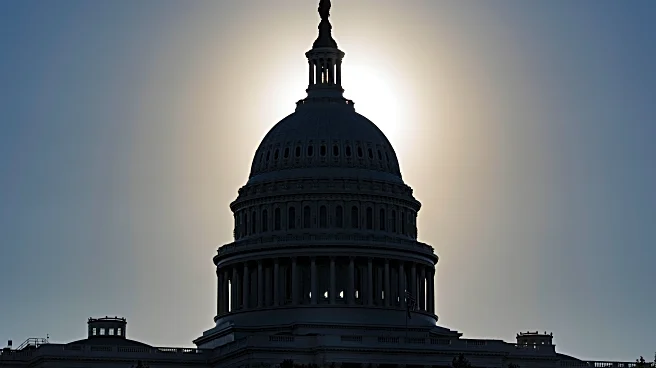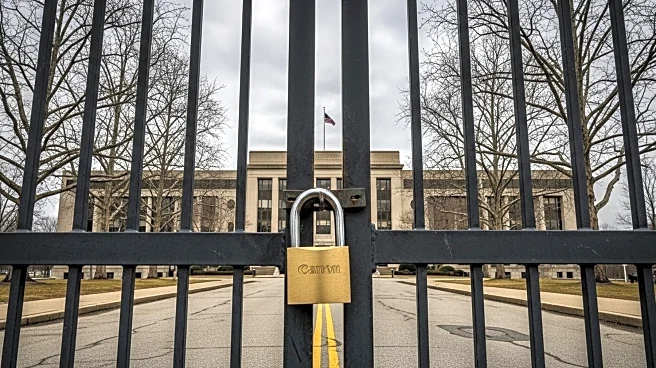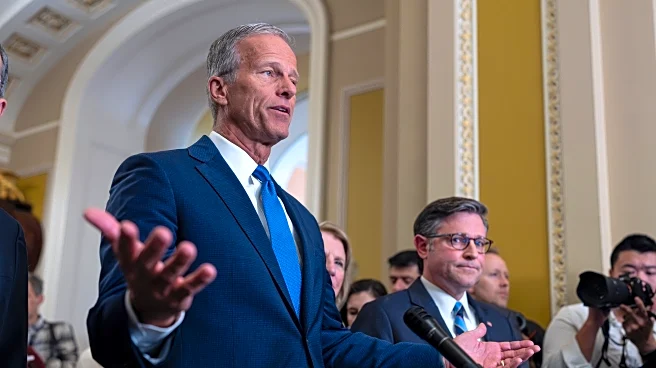What's Happening?
The federal government has begun implementing workforce reductions as the government shutdown enters its tenth day. According to the White House budget office, reduction-in-force (RIF) plans are being executed to decrease the size of the federal workforce. Russ Vought, Director of the Office of Management and Budget, announced the commencement of these cuts on social media. The reductions are described as substantial, although specific details have not been disclosed. The White House had previously indicated that layoffs would be pursued, instructing federal agencies to submit their RIF plans for review. These plans target federal programs that lack funding due to the shutdown or are not aligned with the President's priorities. Typically, federal employees are furloughed during shutdowns, but this approach marks a shift towards permanent workforce reductions.
Why It's Important?
The initiation of workforce cuts during a government shutdown is significant as it reflects a strategic move to permanently reduce federal employment, rather than temporary furloughs. This decision could have lasting impacts on federal operations and employee morale. The shutdown itself is a result of political deadlock, with Senate Republicans attempting to pass a stopgap bill to reopen the government, while Democrats demand commitments on healthcare benefits. The prolonged shutdown and workforce reductions could affect public services and the economy, as federal employees face job insecurity and potential loss of income. The situation underscores the deep political divisions and the challenges in reaching bipartisan agreements.
What's Next?
As the shutdown continues, the likelihood of reaching a resolution remains uncertain. Both the House and Senate are currently out of session, and there is no indication of ongoing negotiations between top Democratic and Republican leaders. The impasse may persist, prolonging the shutdown and potentially leading to further workforce reductions. Stakeholders, including federal employees and public service recipients, are likely to experience increased uncertainty and disruption. The political standoff may also influence upcoming legislative priorities and negotiations, as both parties seek to leverage the situation to advance their agendas.
Beyond the Headlines
The decision to implement workforce reductions during a shutdown raises ethical and operational questions about the management of federal resources and employee rights. It highlights the potential for long-term shifts in government employment practices and priorities. The move may set a precedent for handling future shutdowns, influencing how federal agencies plan and execute workforce management strategies. Additionally, the situation may affect public perception of government efficiency and accountability, as citizens and stakeholders assess the impact of political decisions on public services.











